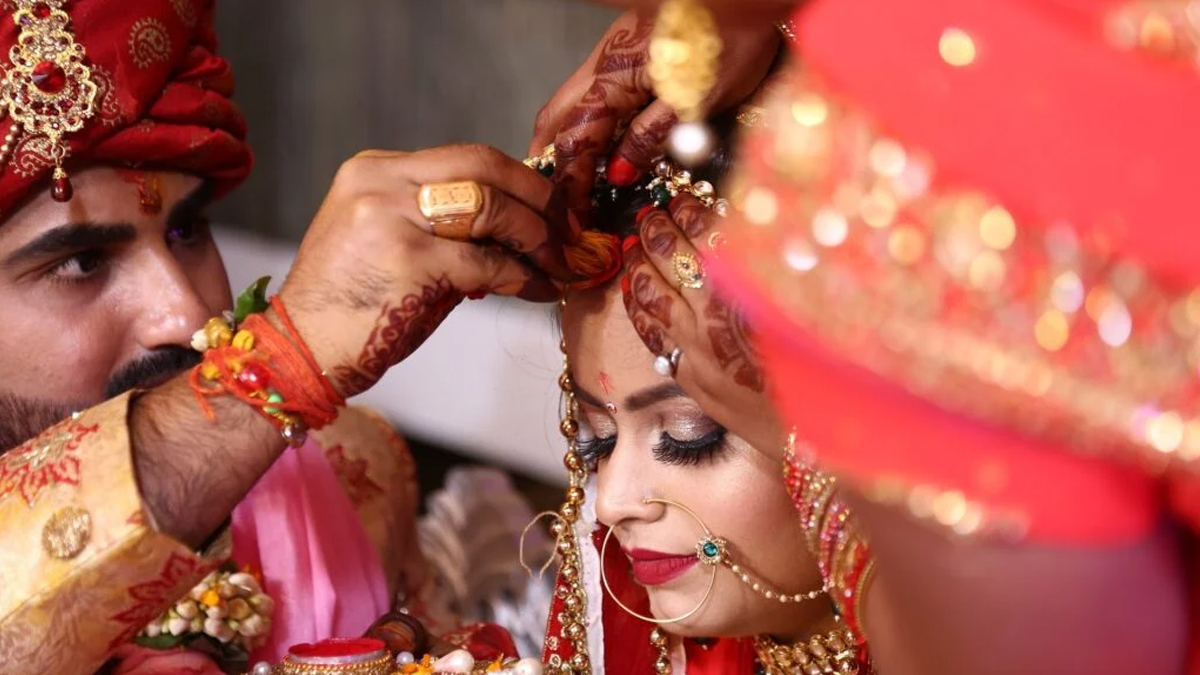Entertainment
Common Indian Wedding Traditions and Rituals
Learn about the common Indian wedding traditions and rituals, including the Mehndi ceremony, Sangeet, Baraat, Jaimala, Varmala, Seven Vows, Mangalsutra and Sindoor, Kanyadaan, Haldi Ceremony, and Reception. Discover the vibrant colors, rich cultural traditions, and grandeur of Indian weddings. Whether you are attending an Indian wedding or planning one yourself, these traditions and rituals are sure to make the experience unforgettable.

Common Indian Wedding Traditions and Rituals
Common Indian wedding are known for their grandeur, vibrant colors, and rich cultural traditions. They are a celebration of love, unity, and the coming together of two families. Each region in India has its own unique set of wedding rituals and traditions, making Indian weddings diverse and fascinating.
In this blog post, we will explore some of the common Indian wedding traditions and rituals.
1. Mehndi Ceremony
The Mehndi ceremony is a pre-wedding ritual where the bride’s hands and feet are adorned with intricate henna designs. It is believed to bring good luck and symbolizes the love between the couple. The ceremony is usually accompanied by music, dance, and joyful celebrations.
2. Sangeet
The Sangeet is a musical night filled with dance and music. It is a way for both families to come together and celebrate the upcoming wedding. Relatives and friends perform traditional dances and sing songs, creating a festive atmosphere.
3. Baraat
The Baraat is the groom’s procession, where he arrives at the wedding venue accompanied by his family and friends. The groom is usually seated on a beautifully decorated horse or in a luxurious car. The procession is accompanied by music, dancing, and a lot of excitement.
4. Jaimala
The Jaimala is the exchange of garlands between the bride and groom. It signifies their acceptance of each other and their willingness to spend the rest of their lives together. This ritual is usually accompanied by cheers and applause from the guests.
5. Varmala
Similar to the Jaimala, the Varmala is the exchange of garlands. However, in some regions, the groom’s friends playfully lift him up to make it challenging for the bride to put the garland around his neck. It adds a fun and lighthearted element to the ceremony.
6. Seven Vows
The Seven Vows, also known as Saptapadi, are the most significant part of an Indian wedding ceremony. The couple takes seven vows, each representing a promise they make to each other. These vows symbolize their commitment, love, and mutual respect.
7. Mangalsutra and Sindoor
The Mangalsutra is a sacred necklace that the groom ties around the bride’s neck. It is a symbol of their marital status and is believed to protect the couple from evil. The Sindoor is the red vermilion powder that the groom applies on the bride’s forehead, indicating her married status.
8. Kanyadaan
Kanyadaan is a significant ritual where the bride’s father gives her away to the groom. It symbolizes the father’s acceptance of the groom as his daughter’s life partner. It is a heartfelt moment filled with emotions.
9. Haldi Ceremony
The Haldi ceremony is a pre-wedding ritual where a paste made from turmeric, sandalwood, and other ingredients is applied to the bride and groom’s body. It is believed to cleanse and purify them before the wedding. The yellow color of the paste also adds a festive touch to the ceremony.
10. Reception
The reception is the post-wedding celebration where the couple is officially introduced as husband and wife to their family and friends. It is a time for everyone to come together, congratulate the couple, and celebrate their union. The reception usually includes dinner, music, and dance.
Indian weddings are a beautiful blend of traditions, rituals, and celebrations. They are a testament to the rich cultural heritage of India. Each ritual holds significance and adds to the overall charm of the wedding. Whether you are attending an Indian wedding or planning one yourself, these traditions and rituals are sure to make the experience unforgettable.
